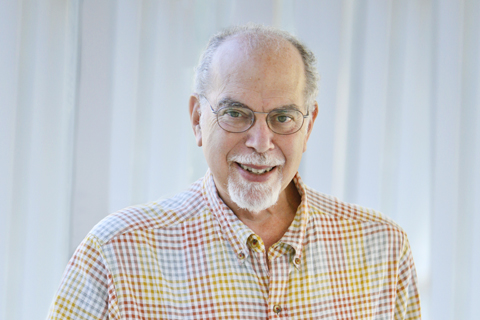Professor John Lisman, renowned for work on molecular basis of memory, 1944-2017
 Photo/Mike Lovett
Photo/Mike LovettJohn Lisman, 1944-2017
Provost Lisa M. Lynch sent the following note to the campus community about the passing of Professor John Lisman:
Dear Colleagues and Students,
It is with great sadness that I write to tell you of the death of our colleague John Lisman. John succumbed to a lung infection, passing away last Friday afternoon, surrounded by his family. He was 73 years old.
John was a Brandeis lifer. He first came here as an undergraduate, earning his B.A. in physics in 1966. He went on to a doctorate in physiology at MIT, followed by a postdoctoral fellowship at Harvard under Nobel Laureate George Wald. In 1974 he returned to Brandeis as an assistant professor. Tenure and promotion came six years later, and then promotion to full professor in 1987. For the past eleven years he held the Zalman Abraham Kekst Chair in Neuroscience.
Researchers discover the key to long-term memory |
As a research scientist, John was both original and indefatigable. He made some of the most significant contributions to our understanding of how long-term memories are encoded at the molecular level, and his work was a crucial catalyst for many other advances in knowledge of the workings of memory. Over many decades, John made repeated breakthroughs in the study of the important molecule CaMKII, and shortly before his death, he provided the most compelling evidence to date that it is responsible for storing long-term memories in the brain; this finding, published in the prestigious journal Neuron, opens up new avenues of research on neurodegenerative diseases such as Alzheimer's and ALS. John's record of accomplishment as a scientist was formally recognized in 2013, when he was elected a Fellow of the American Association for the Advancement of Science.
Shortly before his death, John was honored at the annual Volen Center retreat, which centered on his research on the molecular basis of memory. John contributed to the retreat through a talk delivered from his hospital bed in the ICU. Susan Birren, his longtime colleague, described it as the very best talk she has heard him give completing the full arc from a clever hypothesis to experimental validation of a great idea. For more comments from his colleagues and students please see the Science at Brandeis blog.
John was also highly accomplished in the classroom, earning many plaudits from his students. "The professor showed a great passion for the matter and is an inspiring person." "Professor Lisman engages students for answers instead of simply giving them to you." "I found it most valuable that Professor Lisman had first-hand experience in developing many of the theories of the biochemical processes of memory that we learned in class, allowing students a perspective into theories that continue to be developed and modified." "He gives you real-world experience by connecting his classes and topics to various others, including a trip to the Rose Art Museum to look at pieces related to memory and consolidation." These are among the many testimonies to John's remarkable ability to connect research with teaching and to connect the classroom with the larger world.
As can be gathered from the student comments, John's interests extended beyond neuroscience. He was a strong supporter of the arts at Brandeis, serving on the faculty advisory committee for the Leonard Bernstein Festival of the Creative Arts. This was one of the many forms of service he rendered to the University, including chairing the Neuroscience Program for a number of years.
I know you join with me in sending our deepest sympathies to John's family. He will be greatly missed, and his memory will endure in the many lives he touched.
With a heavy heart,
Lisa
Categories: Science and Technology





